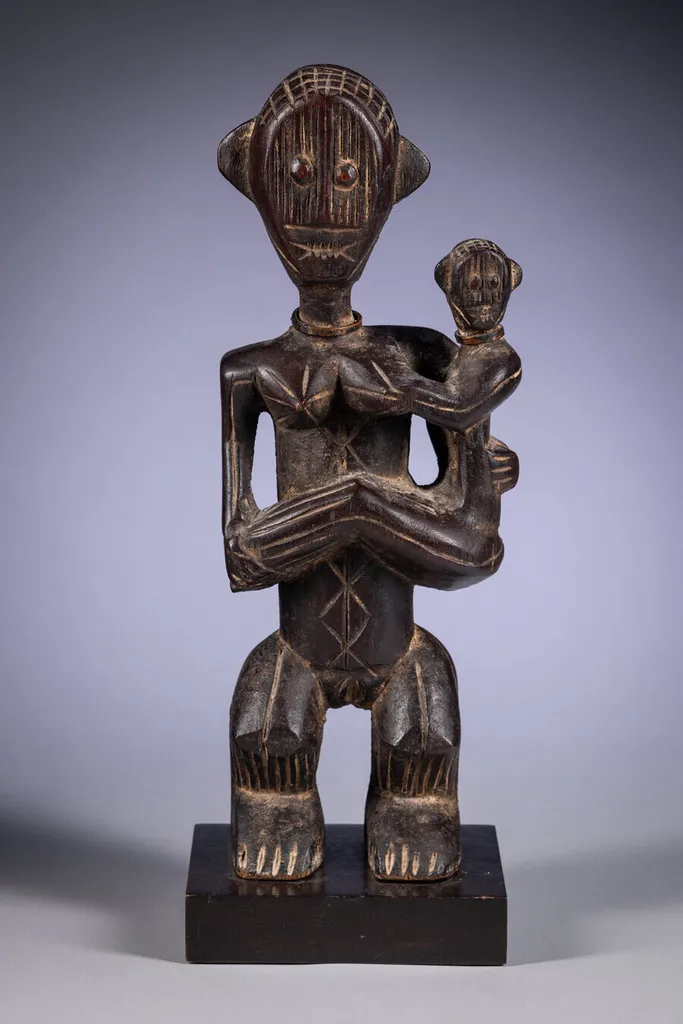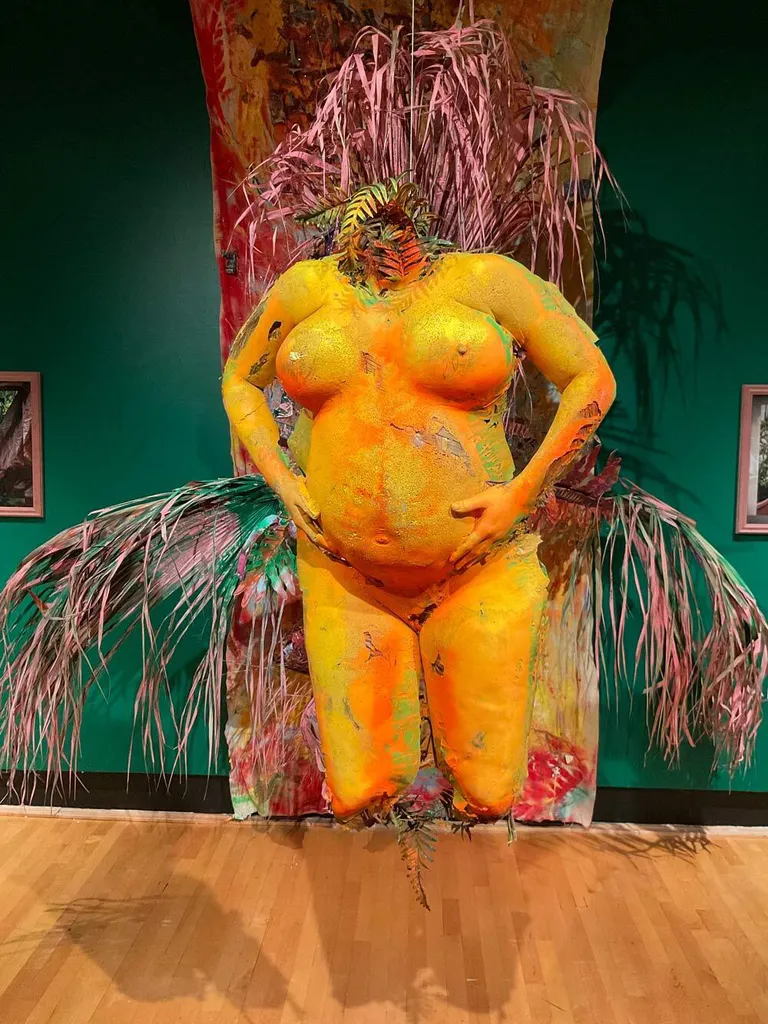- October 03, 2023
- By Sala Levin ’10
In one corner, a centuries-old wooden figure depicts a mother carrying a child on her back. In another, a contemporary foam mold covered with glitter, acrylic paints and resin shows the outline of a pregnant body, belly bulging with new life.
A pair of new exhibits in the University of Maryland Art Gallery, up through Dec. 8, highlights the eternal theme of maternity. “African Art from the Dr. Gilbert and Jean Jackson Collection” and “Mother Molds” by Coralina Rodriguez Meyer approach the subject matter from different perspectives, one traditional and one modern.

“In African art, there’s a prevalence of the mother-child motif,” said Taras W. Matla, director of the UMD Art Gallery. “I wanted to see what kind of response the gallery could have in the form of an exhibition that could add to the conversation about motherhood in a meaningful and robust way.”
The African art on display hails from a range of tribes, including the Baule peoples from present-day Côte d’Ivoire, the Pende people from present-day Democratic Republic of Congo, the Yoruba peoples from present-day Nigeria and the Bangwa peoples from present-day Cameroon. The works come from the extensive holdings of Gil Ph.D. ’72 and Jean Jackson ’71, who have been collecting pieces from African tribes since the 1970s.
“What speaks to me about the art is both the spirituality of it and the texture—the artists use all sorts of textures: woods, metals, stones,” said Gil Jackson. “The artist has the ability to depict in their own way the traditions of the tribe. You can’t vary much from the tradition, but you can reflect your own style in that tradition.”
In the two exhibits, which are adjacent to one another, the newer artwork picks up on the maternal themes of the older pieces. In light of last year’s Supreme Court decision to reverse Roe v. Wade, disproportionately high maternal mortality rates among Black women, and ever-increasing costs of child care, Matla and Melanie Nguyen, curator of the “Mother Molds” exhibit, felt that Rodriguez Meyer’s work highlighting pregnant bodies was important to include.

Based in Brooklyn and Miami, Rodriguez Meyer first began making molds of pregnant people when she became pregnant with her daughter in 2018, 10 years after doctors said she’d be unable to conceive. Inspired by the traditions of her own Inca, Muisca and Moche ancestors, she made a mold of her own swollen abdomen and began working with doulas to create molds of other people.
Rodriguez Meyer “uses those casts to make beautiful sculptural works of art that she decorates with all kinds of found ephemera that she picks up on nature walks, borrows from the people sitting for the molds or finds at thrift stores,” said Nguyen. In one piece, called “Citrus Skin" (at left), Rodriguez Meyer uses paint to create an effect that looks like the rind of an orange—a reference to an old wives’ tale in the Caribbean that a mother-to-be’s cravings for certain citrus fruits can indicate the sex of the baby.
Nguyen hopes that the exhibits will inspire conversations about “the importance of these kinds of traditions and rituals for the birthing people,” she said. “Hopefully honoring those alternative forms of knowledge is something that visitors will come away with.”
The University of Maryland Art Gallery is located in the Parren J. Mitchell Art-Sociology Building. The gallery is open Monday–Friday, from 10 a.m. to 4 p.m. Admission is free.
